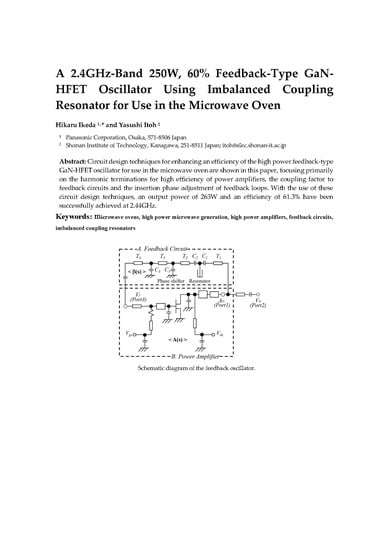A 2.4 GHz-Band 250 W, 60% Feedback-Type GaN-HFET Oscillator Using Imbalanced Coupling Resonator for Use in the Microwave Oven
Abstract
:1. Introduction
2. Circuit Design
2.1. Power Amplifier
2.2. Feedback Circuit
2.3. High Power Oscillator
3. Circuit Fabrication and Results
4. Comparative Analysis
5. Conclusions
Author Contributions
Funding
Conflicts of Interest
References
- Werner, K. RF Energy Systems: Realizing New Applications. Microwave J. 2015, 58, 22–34. [Google Scholar]
- Yakovlev, V. Computer Modeling in the Development of Mechanisms of Control over Microwave Heating in Solid-State Energy Systems. AMPERE Newsl. 2016, 89, 18–21. [Google Scholar]
- Yakovlev, V. Frequency Control over the Heating Patterns in a Solid-State Dual-Source Microwave Oven. In Proceedings of the IEEE MTT-S International Microwave Symposium, Phoenix, AZ, USA, 17–22 May 2015; pp. 1–4. [Google Scholar]
- Ikeda, H.; Kamiyama, T.; Nitta, T.; Uno, T.; Iwata, M.; Yahata, K. 1.2 kW Power Combiner Unit using Phase Control for 2.4 GHz band. In Proceedings of the IEEE International Meeting for Future of Electron Devices, Kansai (IMFEDK), Kyoto, Japan, 4–5 June 2015; pp. 1–2. [Google Scholar]
- Shi, T.; Li, K. High power solid-state oscillator for microwave oven applications. In Proceedings of the IEEE/MTT-S International Microwave Symposium Digest, Montreal, QC, Canada, 17–22 June 2012; pp. 1–4. [Google Scholar]
- Shi, T.; Li, K. High power solid-state DRO with power booster. In Proceedings of the 2012 7th European Microwave Integrated Circuit Conference, Amsterdam, The Netherlands, 29–30 October 2012; pp. 461–464. [Google Scholar]
- Kim, S.H.; Kim, H.J.; Shin, S.W.; Kim, J.D.; Kim, B.K.; Choi, J.J. Combined power oscillator using GaN HEMT. In Proceedings of the 2011 IEEE MTT-S International Microwave Symposium, Baltimore, MD, USA, 5–10 June 2011; pp. 1–4. [Google Scholar]
- Ikeda, H.; Itoh, Y. 2.4 GHz-Band High Power and High Efficiency Solid-State Injection-Locked Oscillator Using Imbalanced Coupling Resonator. In Proceedings of the 2017 IEEE MTT-S International Microwave Symposium (IMS), Honolulu, HI, USA, June 2017; pp. 1–4. [Google Scholar]
- Ikeda, H.; Itoh, Y. 2.4 GHz-band high power and high efficiency solid-state injection-locked oscillator. IEEE Trans. Microwave Theory Tech. 2018, 66, 3315–3322. [Google Scholar] [CrossRef]
- Lindberg, E. The Barkhausen criterion (observation?). In Proceedings of the IEEE Workshop Nonlinear Dynamics Electronic Systems, Dresden, Germany, 26–28 May 2010; pp. 15–18. [Google Scholar]
- Moon, J.; Jee, S.; Kim, J.; Kim, J.; Kim, B. Behaviors of class-F and class-F−1 amplifiers. IEEE Trans. Microw. Theory Tech. 2012, 60, 1937–1951. [Google Scholar] [CrossRef]
- Liu, Z.; Chen, X.; Yang, M.; Liu, C. Experimental studies on a low power injection-locked continuous wave magnetron. In Proceedings of the 2017 IEEE MTT-S International Microwave Symposium, Honolulu, HI, USA, 4–9 June 2017; pp. 1–4. [Google Scholar]
- Coaxial Resonator. Available online: http://daiken-chem.co.jp/en/q3-top/q3-seihin.html#tem (accessed on 15 July 2019).

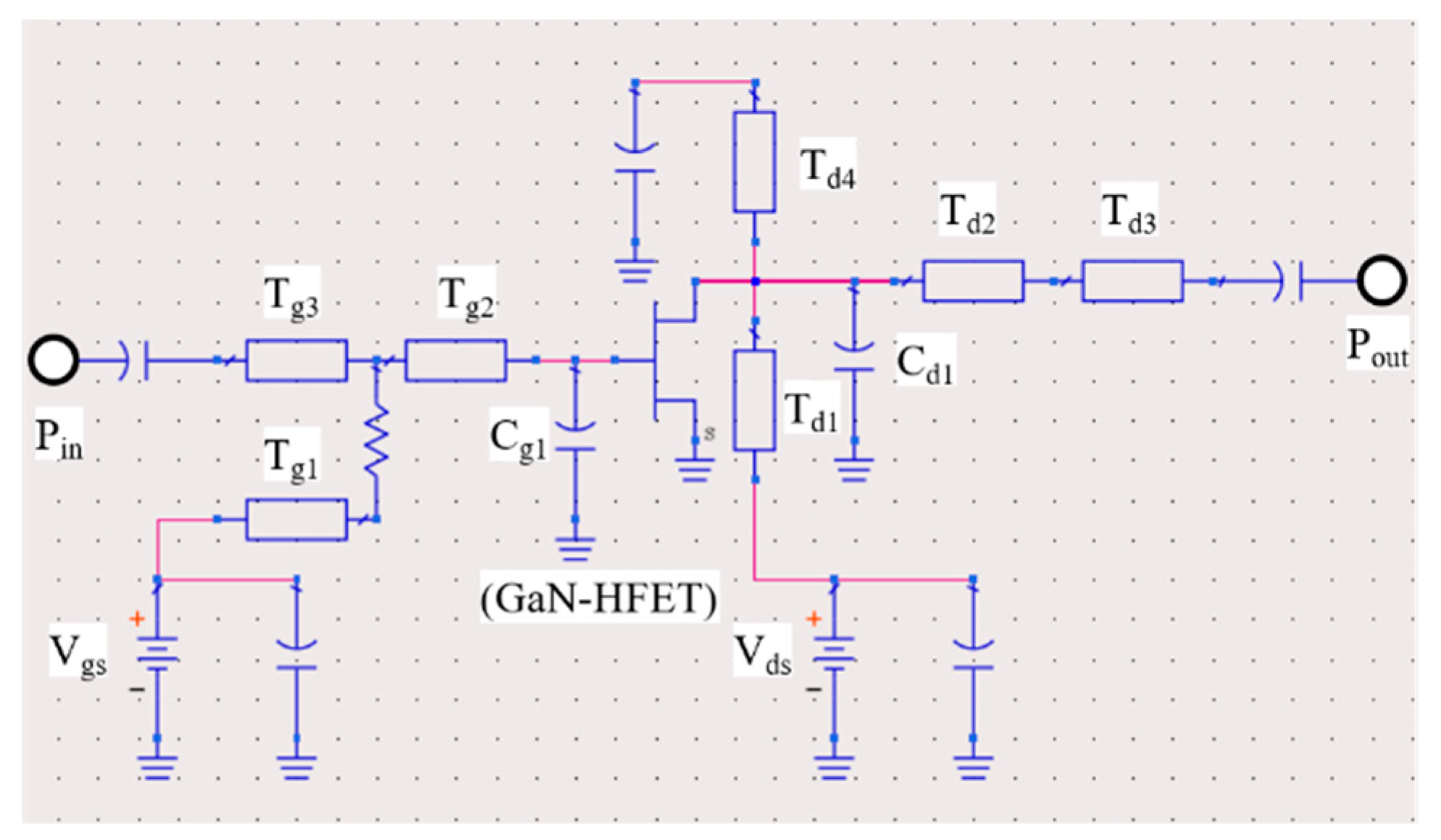
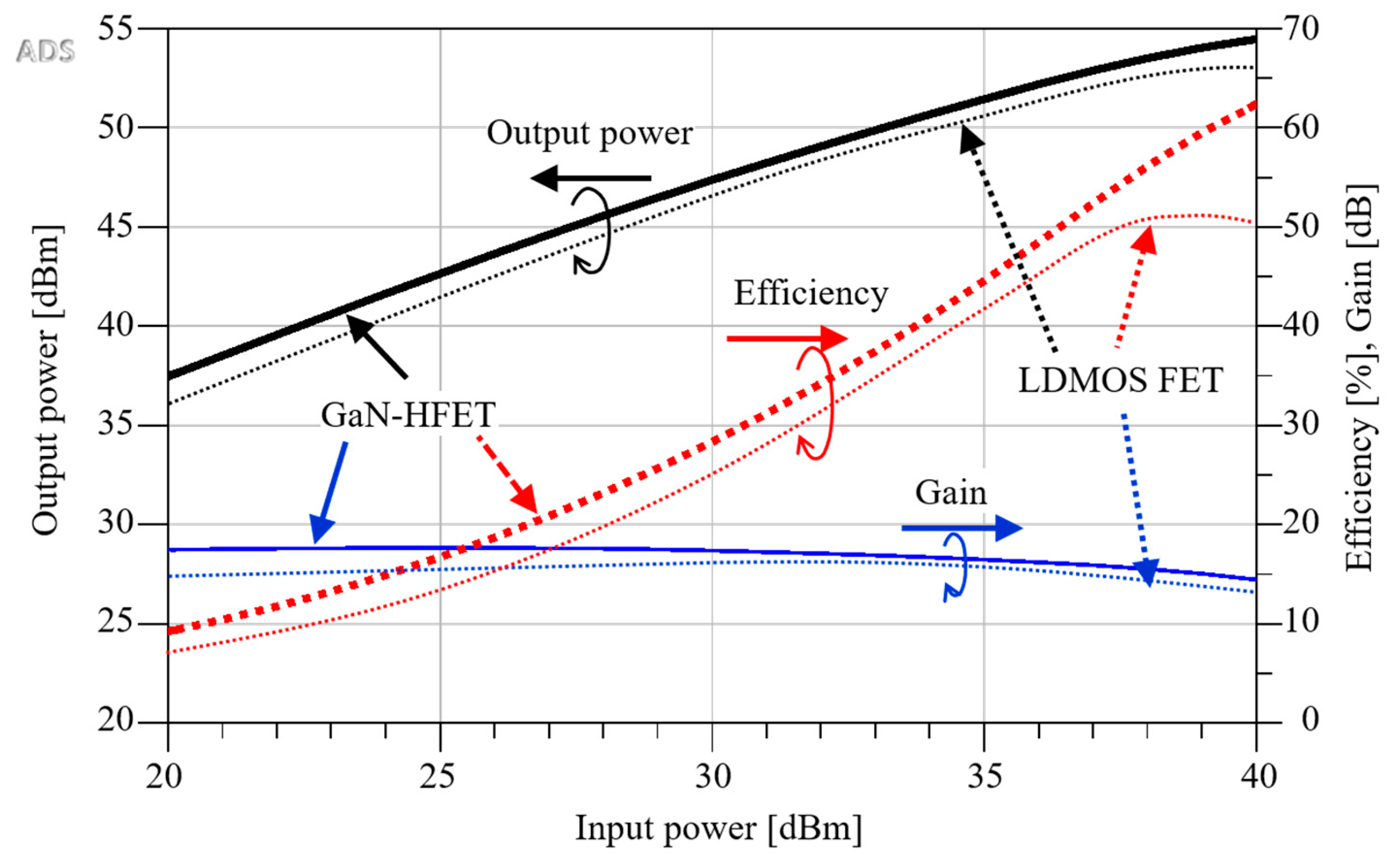
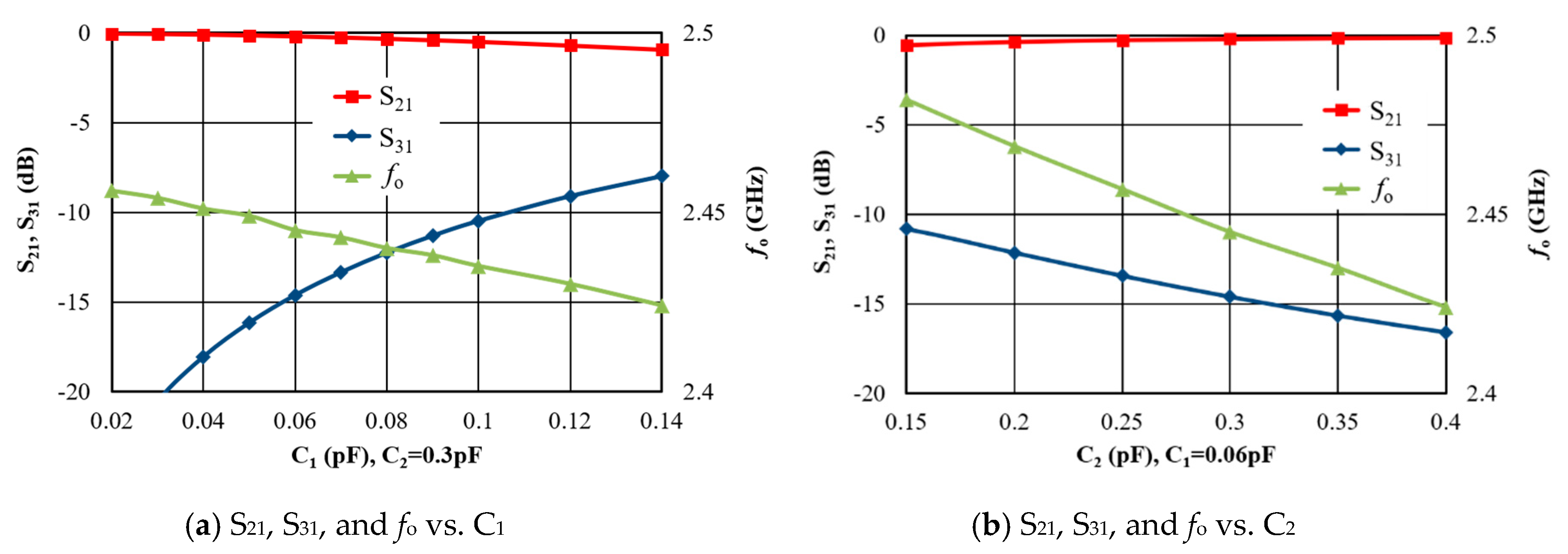


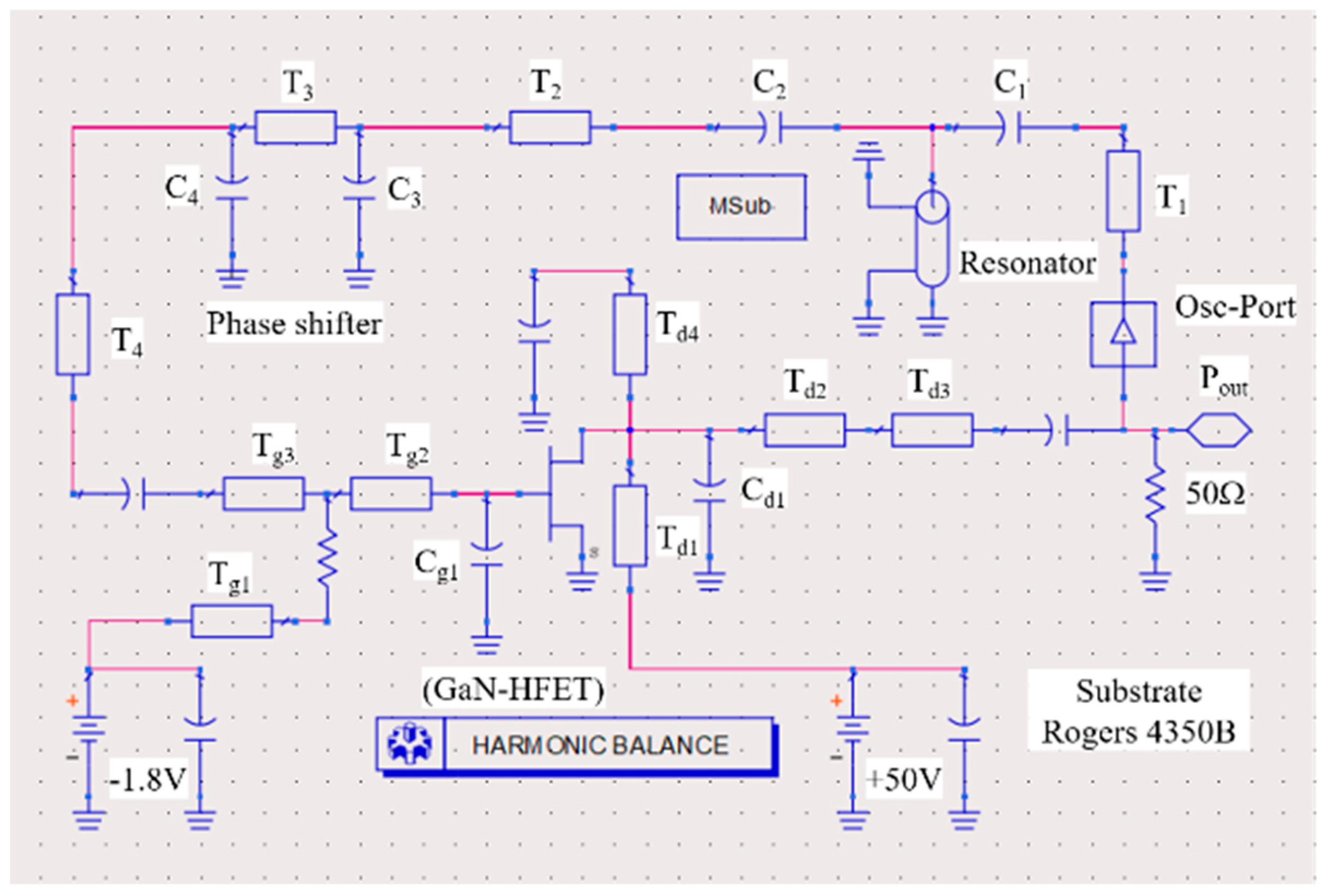

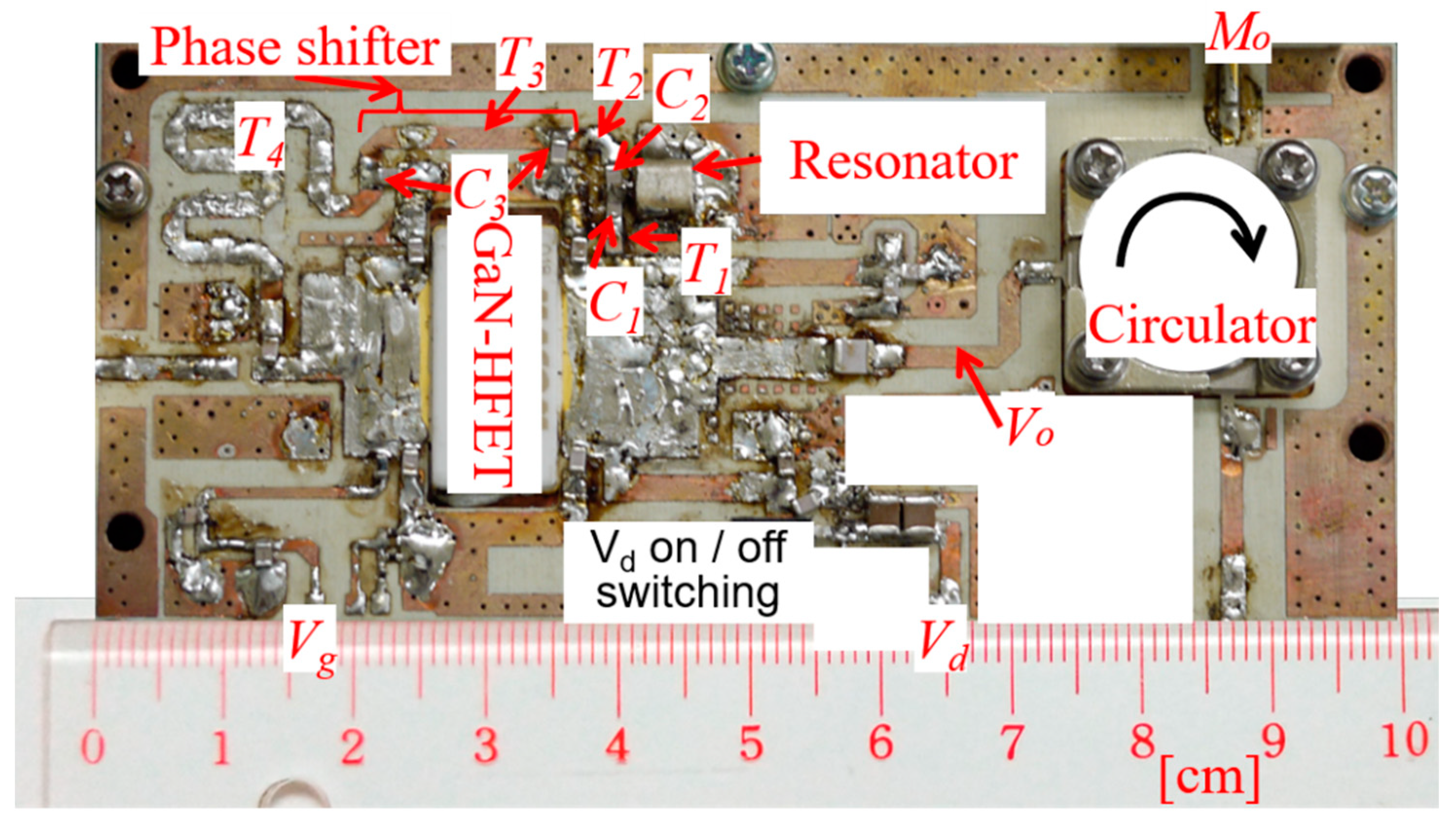
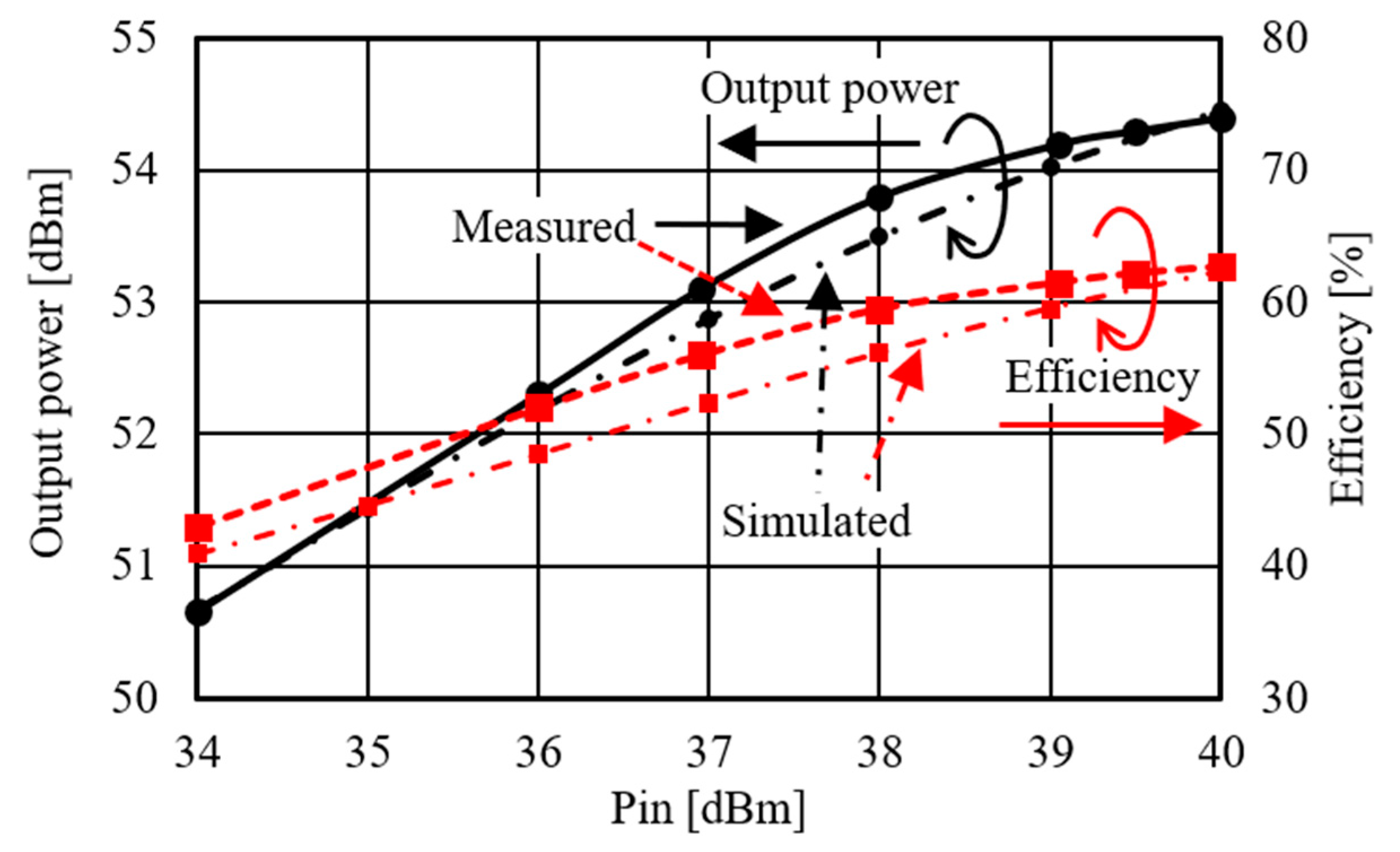

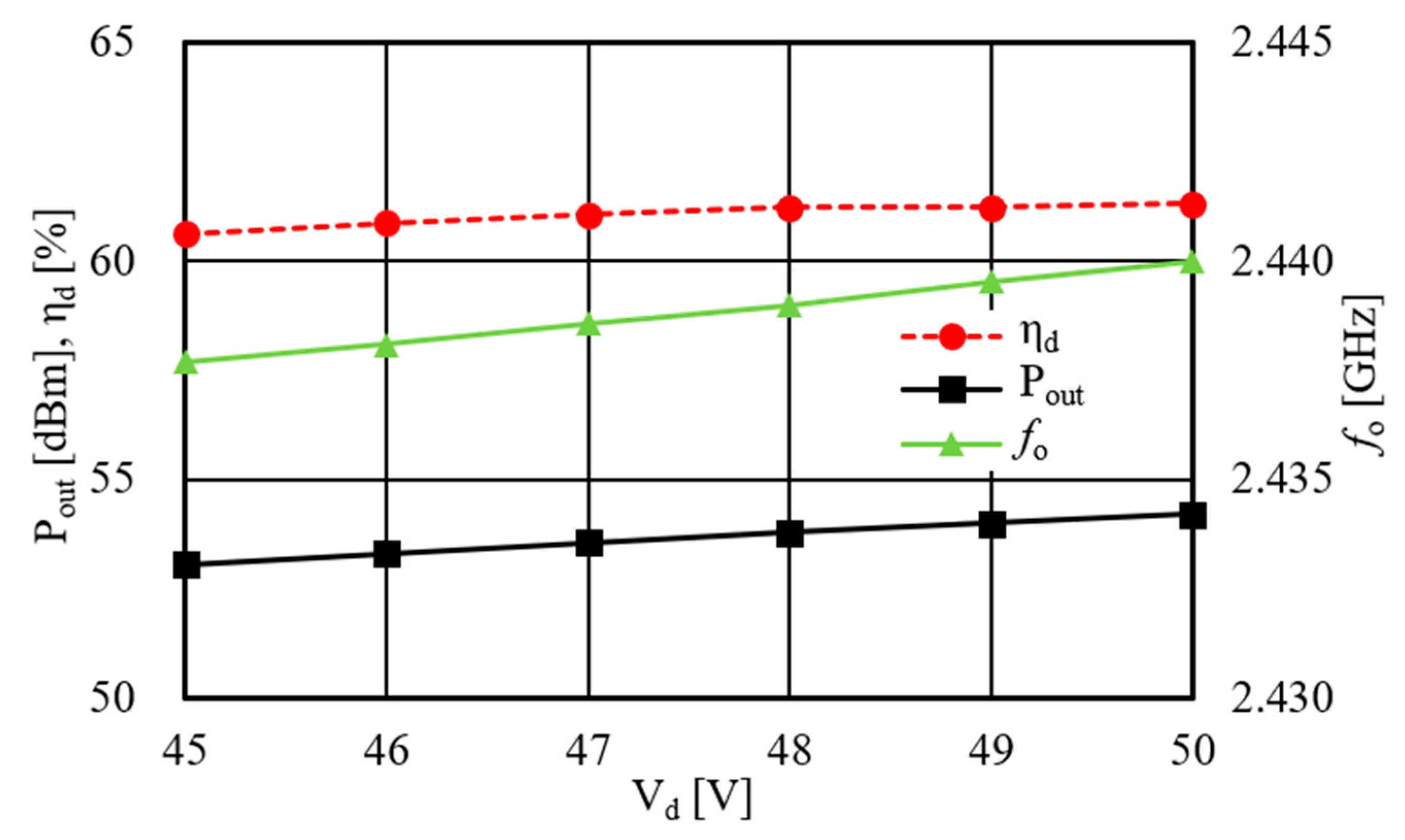


| Reference | Output Power (W) | Efficiency (%) | Device | Resonator |
|---|---|---|---|---|
| (5) | 157 (310) | 44 (46) | LDMOS | Ring |
| (6) | 138 (330) | 41 (45) | LDMOS | Dielectric |
| (7) | 48 | 58 | GaN-HEMT *1 | - |
| (9) | 210 | 51 | LDMOS | Coaxial |
| This work | 263 | 61 | GaN-HFET | Coaxial |
© 2019 by the authors. Licensee MDPI, Basel, Switzerland. This article is an open access article distributed under the terms and conditions of the Creative Commons Attribution (CC BY) license (http://creativecommons.org/licenses/by/4.0/).
Share and Cite
Ikeda, H.; Itoh, Y. A 2.4 GHz-Band 250 W, 60% Feedback-Type GaN-HFET Oscillator Using Imbalanced Coupling Resonator for Use in the Microwave Oven. Appl. Sci. 2019, 9, 2887. https://doi.org/10.3390/app9142887
Ikeda H, Itoh Y. A 2.4 GHz-Band 250 W, 60% Feedback-Type GaN-HFET Oscillator Using Imbalanced Coupling Resonator for Use in the Microwave Oven. Applied Sciences. 2019; 9(14):2887. https://doi.org/10.3390/app9142887
Chicago/Turabian StyleIkeda, Hikaru, and Yasushi Itoh. 2019. "A 2.4 GHz-Band 250 W, 60% Feedback-Type GaN-HFET Oscillator Using Imbalanced Coupling Resonator for Use in the Microwave Oven" Applied Sciences 9, no. 14: 2887. https://doi.org/10.3390/app9142887



